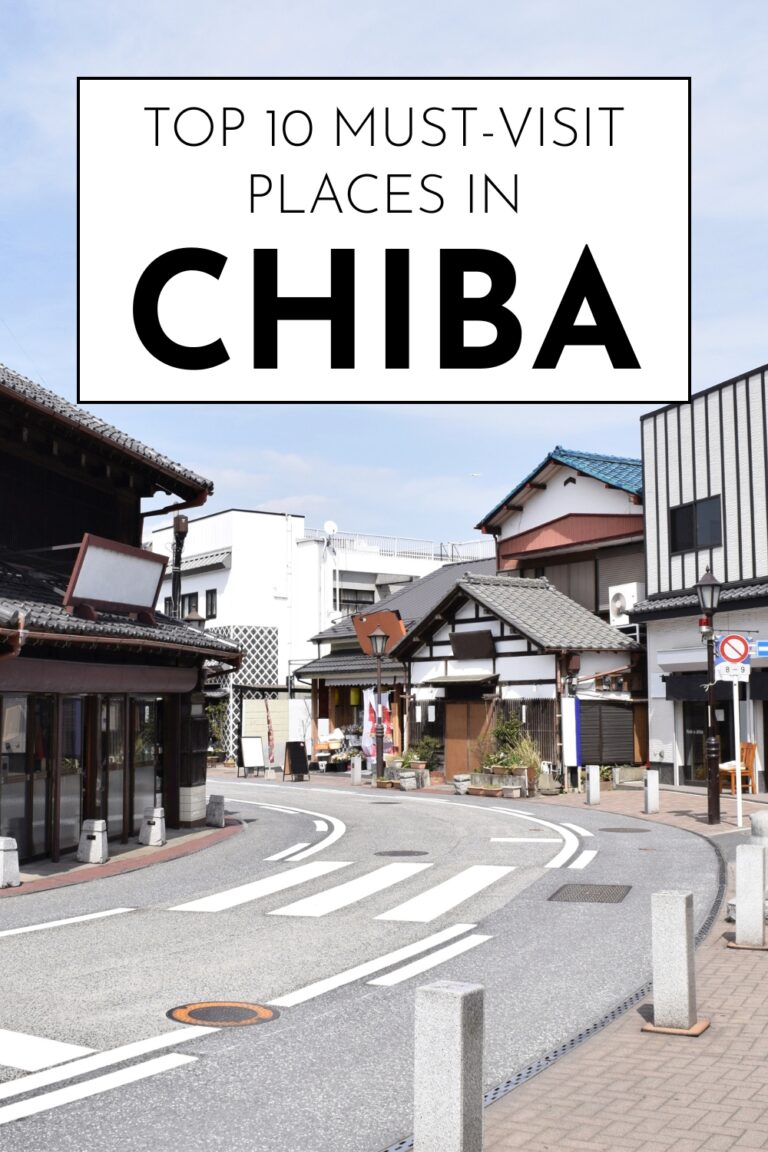Chiba Prefecture, located just east of Tokyo, offers an incredible blend of natural beauty, cultural attractions, and modern entertainment that makes it a perfect destination for travelers seeking variety. This coastal prefecture stretches along Tokyo Bay and the Pacific Ocean, providing everything from pristine beaches and traditional temples to world-class theme parks and bustling markets.
Known for its proximity to Tokyo yet distinct character, Chiba serves as both a convenient day-trip destination and a worthwhile extended stay location. The prefecture combines the best of traditional Japan with modern attractions, offering visitors authentic cultural experiences alongside cutting-edge entertainment.
From the magical world of Tokyo Disneyland to serene Buddhist temples, from fresh seafood markets to scenic coastal drives, Chiba presents a diverse tapestry of experiences that showcase different aspects of Japanese culture and natural beauty.
Let’s explore the ten most spectacular destinations that make Chiba an essential addition to any Japan itinerary.
1. Tokyo Disneyland – The Magical Kingdom
Tokyo Disneyland stands as one of the world’s most beloved theme parks, bringing Disney magic to Japan with uniquely Japanese touches. Located in Urayasu, this enchanting destination has captured hearts since opening in 1983 and continues to evolve with new attractions and seasonal celebrations.
Disney Magic with Japanese Hospitality
The park features classic Disney attractions reimagined with exceptional Japanese attention to detail and service. Cast members provide legendary hospitality that exceeds even Disney’s high standards, creating magical moments for visitors of all ages.
Seasonal events transform the park throughout the year, from spectacular Halloween celebrations to enchanting Christmas illuminations. These limited-time experiences showcase Japanese seasonal traditions while maintaining Disney’s storytelling magic.
World-Class Attractions and Entertainment
The park’s attractions range from gentle family rides to thrilling adventures. Space Mountain, Pirates of the Caribbean, and Haunted Mansion deliver classic Disney excitement, while unique attractions like Pooh’s Hunny Hunt use innovative trackless technology found nowhere else.
Daily parades and stage shows feature elaborate costumes, choreography, and production values that rival Broadway performances. The electrical parade and fireworks spectacular create unforgettable evening entertainment.
Best time to visit: Weekdays during off-peak seasons (January-March, May-June) Key attractions: Space Mountain, Pirates of the Caribbean, Pooh’s Hunny Hunt Special features: Seasonal events, exceptional service, unique Japanese-exclusive attractions
2. Narita-san Shinsho-ji Temple – Sacred Buddhist Heritage
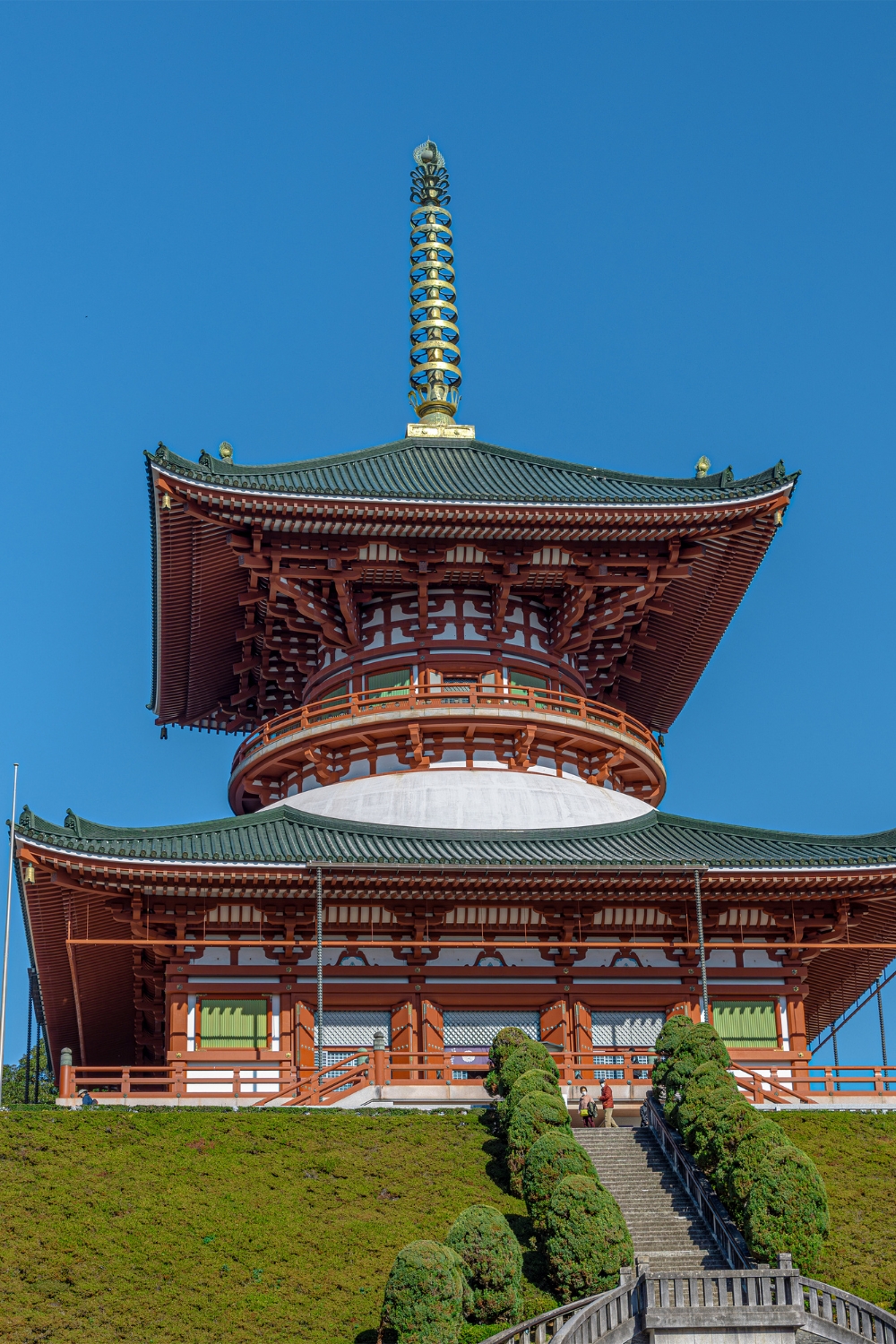
Narita-san Shinsho-ji Temple represents one of Japan’s most important Buddhist sites, attracting millions of worshippers and visitors annually. This ancient temple complex, founded over 1,000 years ago, showcases traditional Japanese religious architecture and spiritual practices.
Historical Significance and Religious Importance
The temple houses a sacred statue of Fudo Myoo, the Buddhist deity of immovable wisdom, making it a major pilgrimage destination. The complex has grown over centuries to include multiple halls, pagodas, and gardens that demonstrate different periods of Japanese architectural development.
Traditional religious ceremonies occur daily, allowing visitors to witness authentic Buddhist practices. The temple’s annual festivals, particularly the New Year celebrations, attract hundreds of thousands of participants in vibrant displays of Japanese spiritual culture.
Temple Architecture and Peaceful Gardens
The temple complex features stunning traditional architecture, including a five-story pagoda that towers above the grounds. Intricate wood carvings, colorful paintings, and golden decorations showcase masterful Japanese craftsmanship.
Peaceful gardens surrounding the temple buildings provide quiet spaces for reflection and meditation. Stone lanterns, ancient trees, and carefully maintained landscapes create a serene atmosphere that contrasts with the bustling temple activities.
Founded: Over 1,000 years ago Main deity: Fudo Myoo statue Best time to visit: Early morning or late afternoon for peaceful atmosphere Cultural significance: Major pilgrimage site with active religious ceremonies
3. Chiba Beach Areas – Coastal Paradise
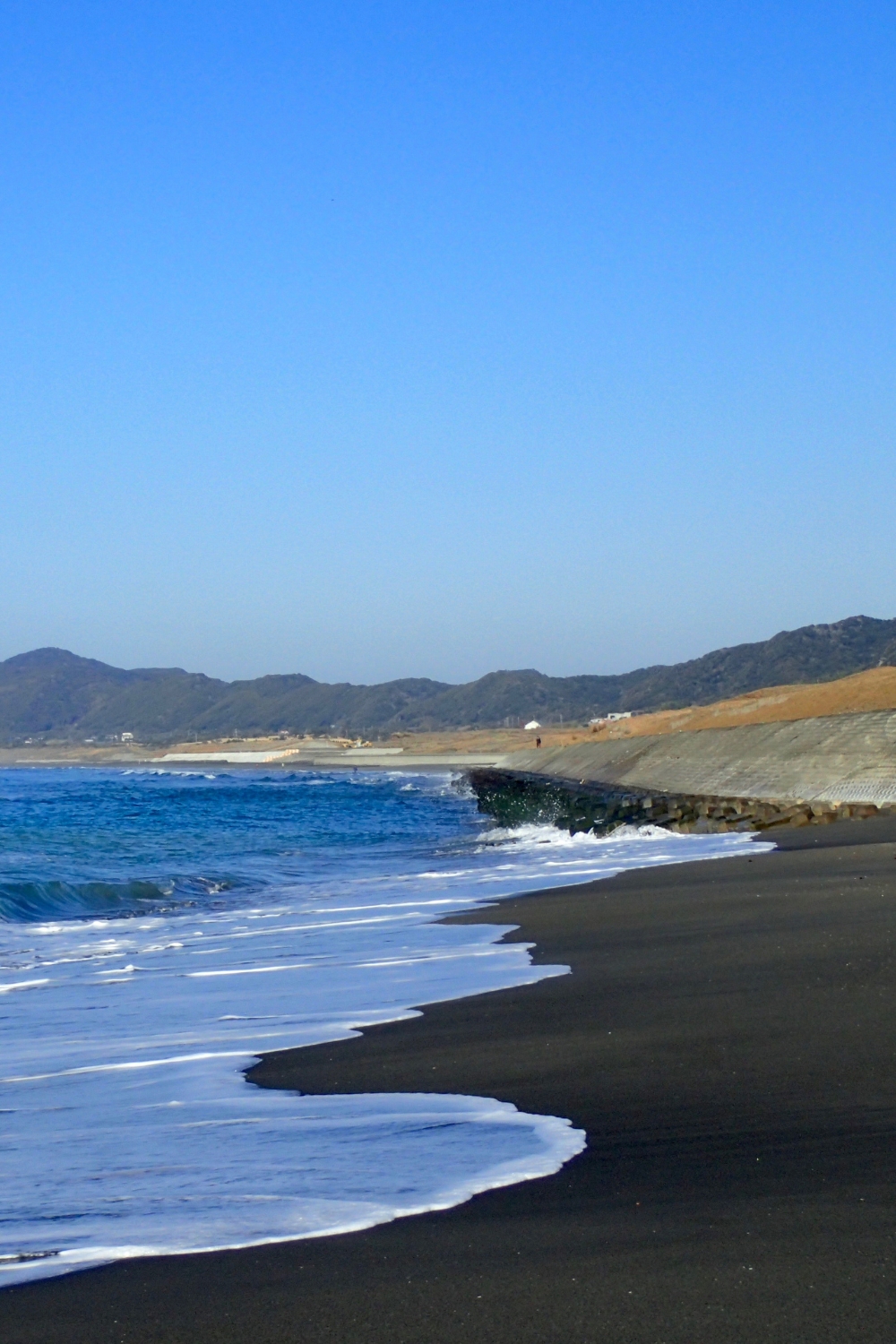
Chiba’s extensive coastline offers some of the Tokyo region’s most beautiful beaches, providing easy access to ocean activities and seaside relaxation. The prefecture’s beaches range from family-friendly swimming areas to surfing hotspots that attract enthusiasts from across Japan.
Kujukuri Beach – Japan’s Longest Sandy Beach
Kujukuri Beach stretches for 60 kilometers along the Pacific coast, earning recognition as one of Japan’s longest sandy beaches. This expansive shoreline offers excellent surfing conditions, beach volleyball courts, and scenic walking paths.
The beach’s consistent waves make it a premier surfing destination, with surf schools and equipment rental shops catering to beginners and experts alike. Beach festivals and events throughout summer create lively atmospheres with food stalls, live music, and cultural performances.
Onjuku Beach – Tropical Paradise
Onjuku Beach provides a more intimate coastal experience with its crescent-shaped bay and crystal-clear waters. Palm trees line the beach, creating an unexpectedly tropical atmosphere that feels worlds away from nearby Tokyo.
The beach town offers excellent seafood restaurants, traditional ryokan inns, and hot spring facilities. Water sports including kayaking, snorkeling, and beach volleyball make it perfect for active travelers seeking ocean adventures.
Kujukuri Beach: 60km long, excellent surfing, beach festivals Onjuku Beach: Tropical atmosphere, water sports, seafood restaurants Best season: May through September for swimming and water activities Activities: Surfing, beach volleyball, seafood dining, hot springs
4. Sawara Historic District – Edo Period Time Capsule
Sawara Historic District preserves the atmosphere of Edo period Japan with its traditional wooden buildings, willow-lined canals, and historic merchant houses. This beautifully preserved town offers visitors an authentic glimpse into Japan’s past without the crowds of more famous historic destinations.
Traditional Architecture and Canal Views
The district’s traditional buildings house museums, restaurants, and shops that maintain historical authenticity while serving modern visitors. Many structures date back over 200 years, showcasing traditional Japanese construction techniques and architectural styles.
Willow trees line the canals that run through the town center, creating picture-perfect scenes that change with the seasons. Boat tours along the canals provide unique perspectives of the historic buildings and bridges.
Cultural Festivals and Traditional Crafts
Sawara hosts spectacular festivals featuring massive ornate floats that parade through the narrow streets. These UNESCO-recognized festivals showcase traditional Japanese festival culture with elaborate decorations, traditional music, and community participation.
Local artisans maintain traditional crafts including sake brewing, pottery, and textile production. Visitors can observe craftspeople at work and purchase authentic handmade items that represent centuries of Japanese artistic tradition.
Historical period: Edo period (1603-1867) preservation Main features: Traditional buildings, willow-lined canals, merchant houses UNESCO recognition: Festival floats designated as UNESCO cultural heritage Best time to visit: Spring for cherry blossoms, autumn for festivals
5. Choshi Fish Market – Fresh Seafood Paradise
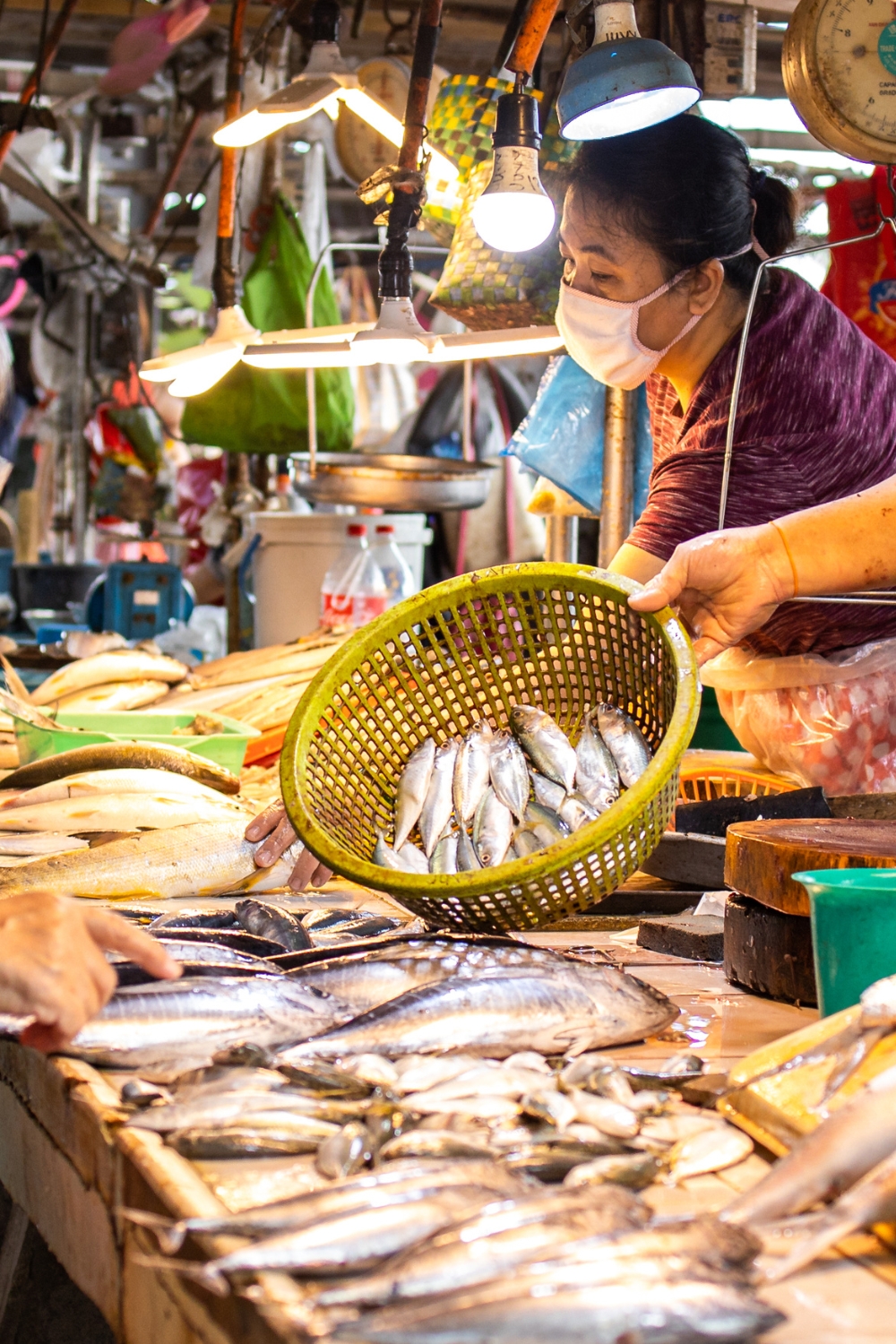
Choshi Fish Market ranks among Japan’s most important fishing ports, providing incredibly fresh seafood and authentic fishing culture experiences. This bustling market offers visitors direct access to Japan’s fishing industry and some of the country’s finest seafood dining.
Fresh Seafood and Market Culture
The market opens early in the morning when fishing boats return with their catches, creating a lively atmosphere of auctioneers, buyers, and fishermen conducting business. Visitors can observe traditional fish auctions and learn about different species caught in local waters.
Numerous restaurants within and around the market serve incredibly fresh sushi, sashimi, and grilled fish prepared moments after purchase. The market’s proximity to fishing boats ensures unmatched freshness and quality.
Lighthouse and Coastal Views
The nearby Choshi Lighthouse provides panoramic views of the Pacific Ocean and surrounding coastline. This historic lighthouse, built in 1874, offers insight into the area’s maritime history and provides excellent photo opportunities.
The lighthouse area features walking paths, parks, and additional seafood restaurants with ocean views. Sunrise viewing from the lighthouse creates memorable experiences for early-rising visitors.
Market hours: Early morning (4 AM – 10 AM) for best selection Specialties: Fresh tuna, local fish species, traditional preparation methods Additional attraction: Historic lighthouse with ocean views Best experience: Early morning market visit followed by fresh seafood breakfast
6. Kamogawa Sea World – Marine Life Spectacular
Kamogawa Sea World combines education, entertainment, and conservation in one of Japan’s premier marine parks. This oceanfront facility showcases marine life from around the world while providing thrilling shows and interactive experiences.
Marine Shows and Educational Programs
The park’s signature orca show features magnificent killer whales performing alongside skilled trainers in a massive stadium overlooking the Pacific Ocean. These performances demonstrate natural behaviors while educating audiences about marine conservation.
Dolphin shows, sea lion performances, and beluga whale presentations provide variety and entertainment for all ages. Educational programs teach visitors about marine ecosystems, conservation efforts, and the importance of protecting ocean environments.
Interactive Experiences and Ocean Views
Touch pools allow visitors to interact safely with rays, sharks, and other marine creatures under expert supervision. These hands-on experiences create memorable connections between visitors and marine life.
The park’s oceanfront location provides stunning views of the Pacific, with some exhibits positioned to blend seamlessly with the natural ocean backdrop. Restaurant terraces offer dining with panoramic ocean views.
Main attractions: Orca shows, dolphin performances, touch pools Educational focus: Marine conservation and ecosystem awareness Unique feature: Oceanfront location with Pacific Ocean views Best for: Families, marine life enthusiasts, educational experiences
7. Boso no Mura – Traditional Village Experience
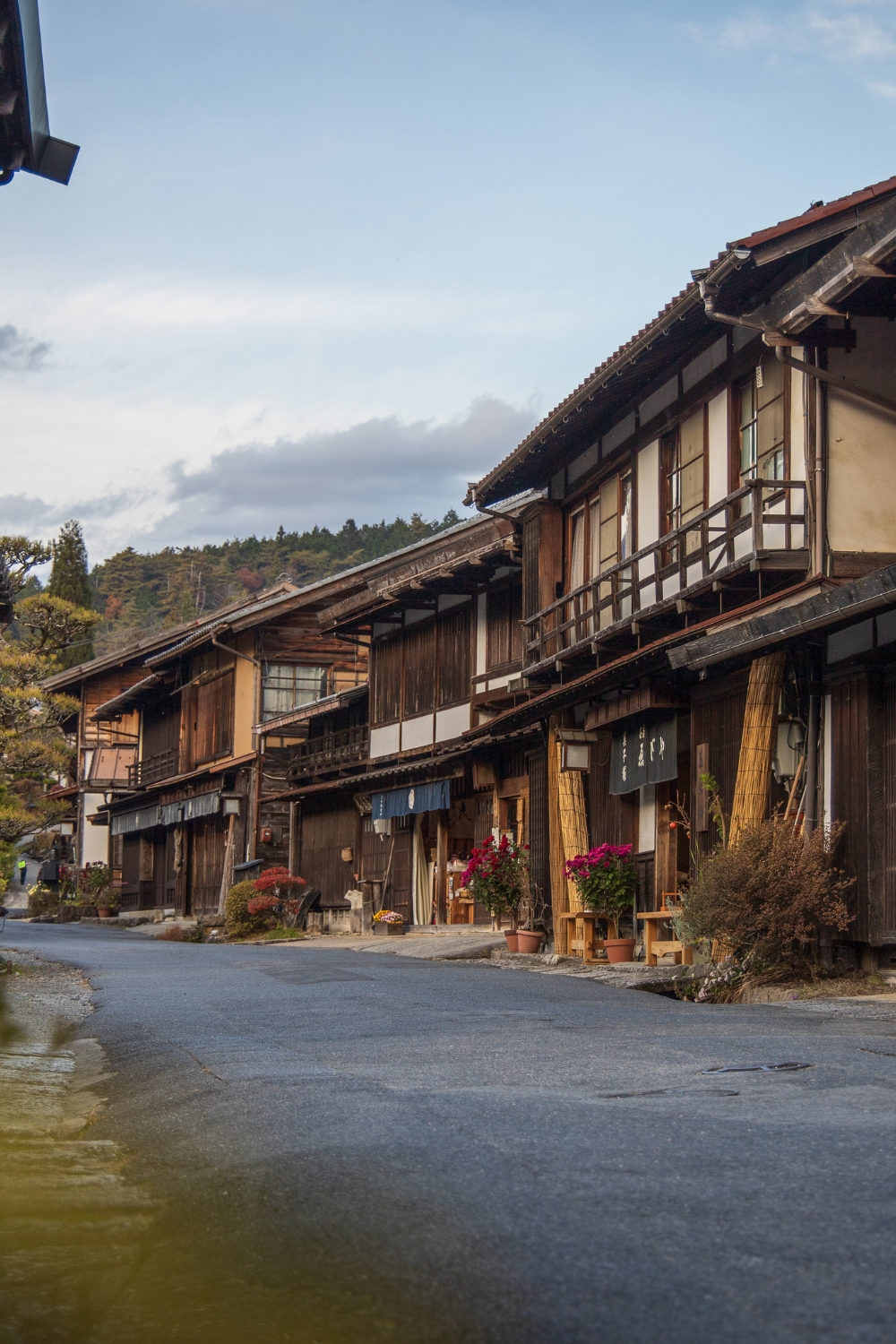
Boso no Mura recreates a traditional Japanese village from the Edo period, offering immersive experiences in historical Japanese rural life. This open-air museum allows visitors to step back in time and participate in traditional activities and crafts.
Historical Village Recreation
The village features authentic buildings relocated from across the region, including farmhouses, shops, and workshops that demonstrate rural Japanese life from centuries past. Costumed interpreters demonstrate traditional crafts, farming techniques, and daily activities.
Visitors can participate in hands-on activities including traditional pottery, weaving, and cooking using historical methods. These interactive experiences provide deeper understanding of Japanese cultural heritage and traditional skills.
Seasonal Activities and Cultural Events
The village adapts its activities to match traditional seasonal patterns, offering rice planting in spring, harvest activities in autumn, and winter craft workshops. These seasonal programs connect visitors with Japan’s agricultural heritage and natural rhythms.
Regular festivals and events recreate historical celebrations with traditional music, dance, and food. These events provide authentic cultural experiences that showcase community traditions and social customs.
Historical period: Edo period (1603-1867) recreation Activities: Traditional crafts, farming demonstrations, seasonal festivals Interactive elements: Hands-on workshops, costumed interpreters Cultural value: Authentic insight into historical Japanese rural life
8. Nokogiriyama (Mount Nokogiri) – Mountain Temple Adventure
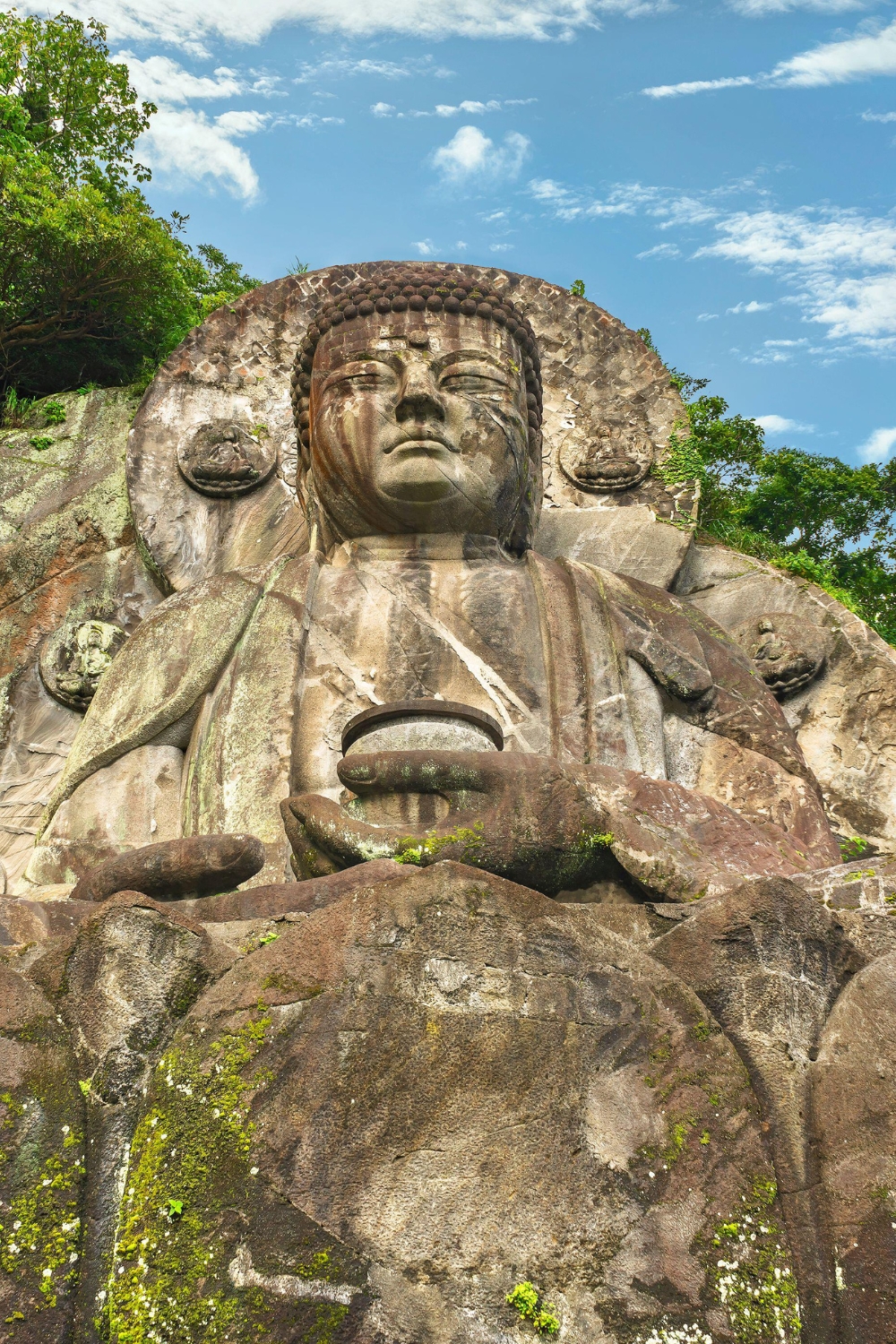
Mount Nokogiri combines natural beauty with spiritual significance, featuring a massive carved Buddha statue and temple complex perched on dramatic cliffs. This mountain destination offers hiking, spiritual experiences, and breathtaking views across Tokyo Bay.
Giant Buddha and Temple Complex
The mountain’s main attraction is the Nihon-ji Temple complex, home to Japan’s largest stone-carved Buddha statue. This impressive 31-meter tall statue, carved directly into the cliff face, creates an awe-inspiring sight that demonstrates the dedication of Buddhist craftsmen.
The temple complex includes numerous smaller Buddha statues, meditation halls, and sacred spaces carved into the rock face. These spiritual sites provide peaceful environments for reflection and prayer while showcasing traditional Buddhist art.
Hiking Trails and Scenic Views
Multiple hiking trails lead to different viewpoints and temple sites, ranging from easy walks to challenging climbs. The mountain’s unique rock formations and cliff faces create dramatic landscapes that change with the seasons.
The summit provides panoramic views across Tokyo Bay, with clear days offering glimpses of Mount Fuji in the distance. These elevated perspectives showcase the geographic relationship between Chiba, Tokyo, and surrounding regions.
Main attraction: 31-meter carved Buddha statue Activities: Hiking, temple visits, scenic photography Views: Tokyo Bay, Mount Fuji (on clear days) Difficulty: Various trail options from easy to challenging
9. Tateyama and Shirahama Beaches – Tropical Escape
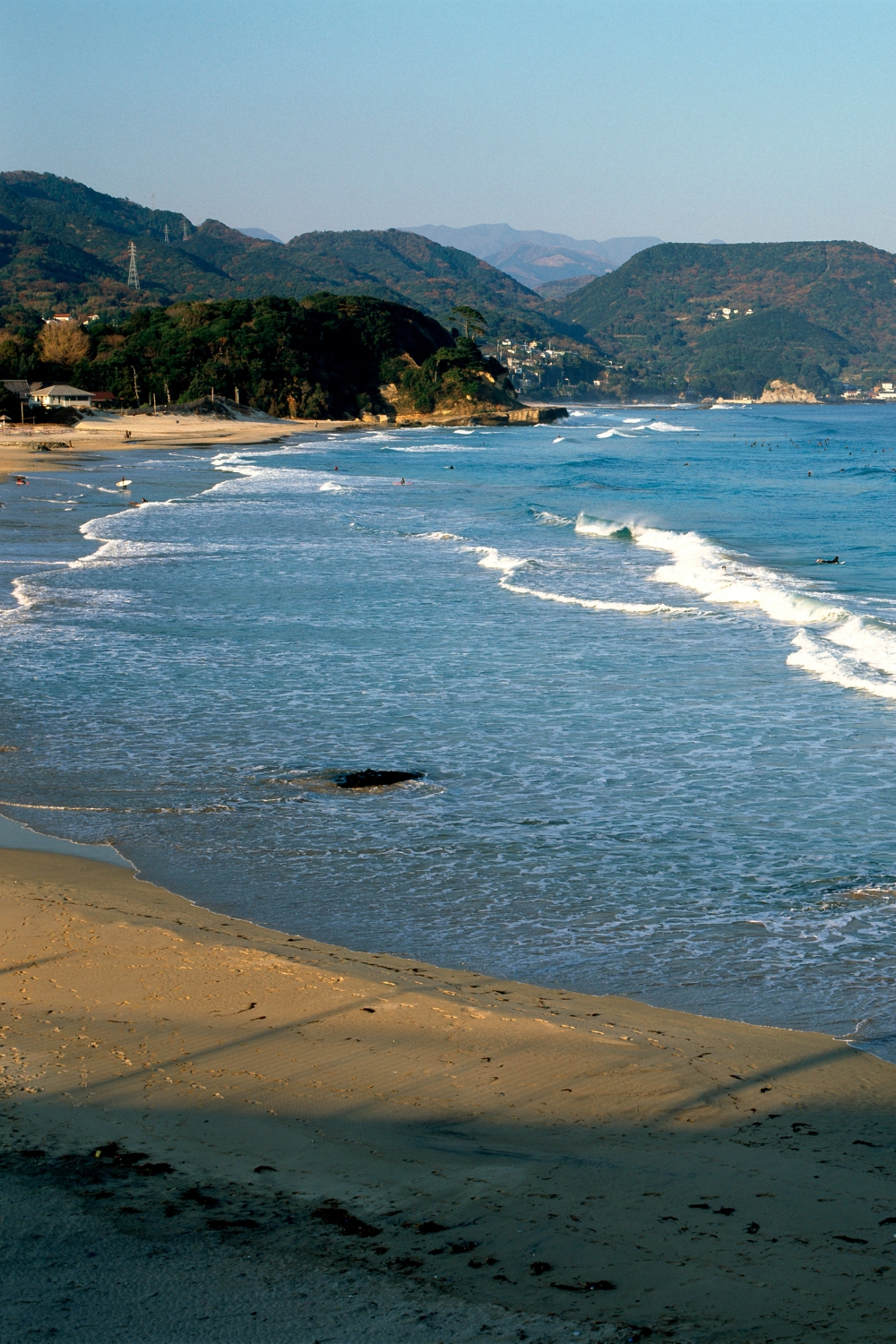
The southern tip of Chiba Prefecture offers some of Japan’s most beautiful beaches, with Tateyama and Shirahama providing tropical atmospheres and crystal-clear waters. These coastal destinations feel remarkably different from the rest of the Tokyo region.
Shirahama Beach – White Sand Paradise
Shirahama Beach lives up to its name with pristine white sand and clear blue waters that rival tropical destinations. Palm trees and warm temperatures create an unexpectedly tropical atmosphere just hours from Tokyo.
The beach offers excellent swimming conditions, water sports equipment rental, and beachside restaurants serving fresh seafood. Beach volleyball courts and walking paths provide additional activities for active visitors.
Tateyama Bay and Coastal Activities
Tateyama Bay provides calmer waters perfect for families and water sports beginners. The bay’s protected location creates ideal conditions for kayaking, paddleboarding, and snorkeling.
Coastal hiking trails connect different beaches and viewpoints, offering spectacular ocean views and access to hidden coves. These trails showcase the area’s natural beauty and provide opportunities for wildlife observation.
Shirahama features: White sand, tropical atmosphere, water sports Tateyama features: Calm bay waters, family-friendly activities Best season: May through October for swimming and water activities Activities: Swimming, water sports, coastal hiking, seafood dining
10. Mobara Park – Cherry Blossom Wonderland
Mobara Park transforms into one of Japan’s most spectacular cherry blossom destinations each spring, with over 2,850 cherry trees creating a pink paradise. This park offers one of the most accessible and beautiful hanami (cherry blossom viewing) experiences in the Tokyo region.
Cherry Blossom Spectacular
The park features multiple varieties of cherry trees that bloom at different times, extending the cherry blossom season from early March through late April. This extended blooming period provides flexibility for visitors planning hanami experiences.
During peak bloom, the park becomes a sea of pink and white blossoms that create tunnel-like paths and frame the central pond. Night illumination during cherry blossom season creates magical evening atmospheres for romantic strolls.
Year-Round Natural Beauty
Beyond cherry blossom season, the park offers beautiful walking paths, seasonal flowers, and peaceful pond areas. Summer brings lush green landscapes, while autumn provides colorful fall foliage.
The park’s central pond attracts various bird species and provides habitat for local wildlife. Walking paths circle the pond and climb gentle hills to provide different perspectives of the landscape.
Cherry trees: Over 2,850 trees of multiple varieties Blooming season: Early March through late April Special features: Night illumination, extended blooming period Year-round attractions: Walking paths, pond, seasonal flowers
Planning Your Chiba Adventure
Getting Around Chiba
Chiba Prefecture is easily accessible from Tokyo via multiple train lines, with most destinations reachable within 1-2 hours. The JR lines provide frequent service to major attractions, while local buses connect to more remote areas.
Renting a car provides maximum flexibility for exploring coastal areas and multiple attractions in single trips. The prefecture’s well-maintained roads and clear signage make driving straightforward for visitors comfortable with Japanese traffic patterns.
Best Times to Visit Different Attractions
Spring (March-May): Perfect for cherry blossoms at Mobara Park, comfortable temperatures for temple visits and hiking, beginning of beach season.
Summer (June-August): Ideal for beach activities, marine parks, and outdoor festivals. Expect crowds at popular attractions but excellent weather for water activities.
Autumn (September-November): Beautiful fall foliage, comfortable temperatures for hiking and sightseeing, harvest festivals at traditional villages.
Winter (December-February): Fewer crowds, special winter illuminations, ideal for indoor attractions like theme parks and museums.
Cultural Considerations and Practical Tips
When visiting temples and traditional sites, dress modestly and observe local customs including removing shoes when required. Photography is generally permitted but ask permission before photographing people or religious ceremonies.
Many attractions offer multi-language support and information, though learning basic Japanese phrases enhances the experience. Most major attractions accept credit cards, but carry cash for smaller establishments and traditional markets.
Conclusion
Chiba Prefecture offers an remarkable diversity of experiences that showcase Japan’s natural beauty, cultural heritage, and modern entertainment excellence. From the magical world of Tokyo Disneyland to serene Buddhist temples, from pristine beaches to traditional villages, each destination reveals different aspects of Japanese culture and natural splendor.
These ten must-visit places represent the best of what Chiba has to offer, providing experiences that range from spiritual and cultural to adventurous and entertaining. The prefecture’s proximity to Tokyo combined with its distinct character makes it an ideal destination for travelers seeking variety and authenticity.
Whether you’re interested in traditional Japanese culture, natural beauty, modern entertainment, or culinary experiences, Chiba provides all of these elements within easy reach of Japan’s capital. The combination of accessibility, diversity, and quality makes Chiba perfect for day trips or extended explorations.
Start planning your Chiba adventure today and discover why this remarkable prefecture has become a favorite destination for both international visitors and Tokyo residents seeking escape and adventure. From ancient temples to modern theme parks, from mountain peaks to ocean shores, Chiba awaits with countless opportunities for unforgettable experiences.
